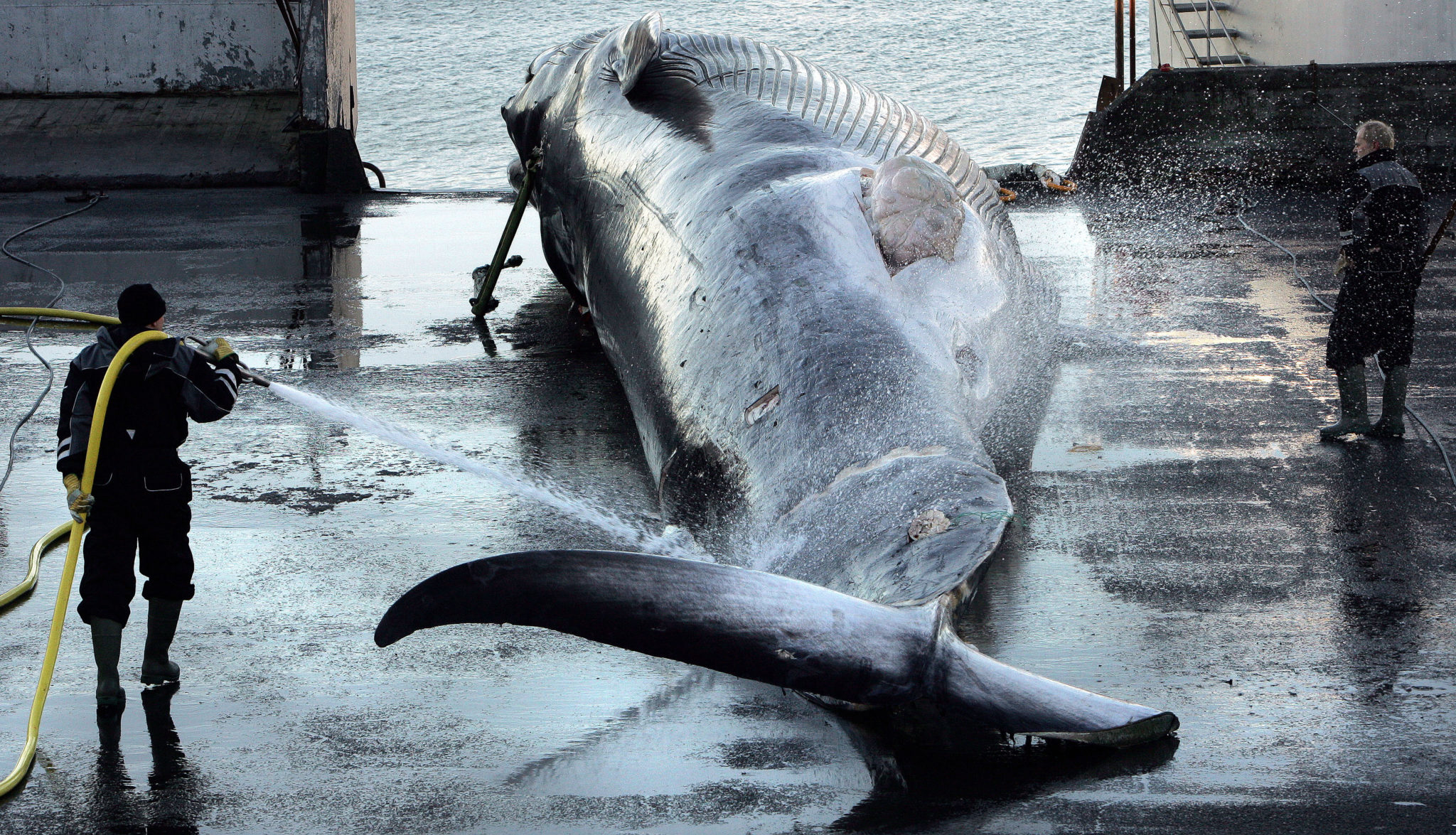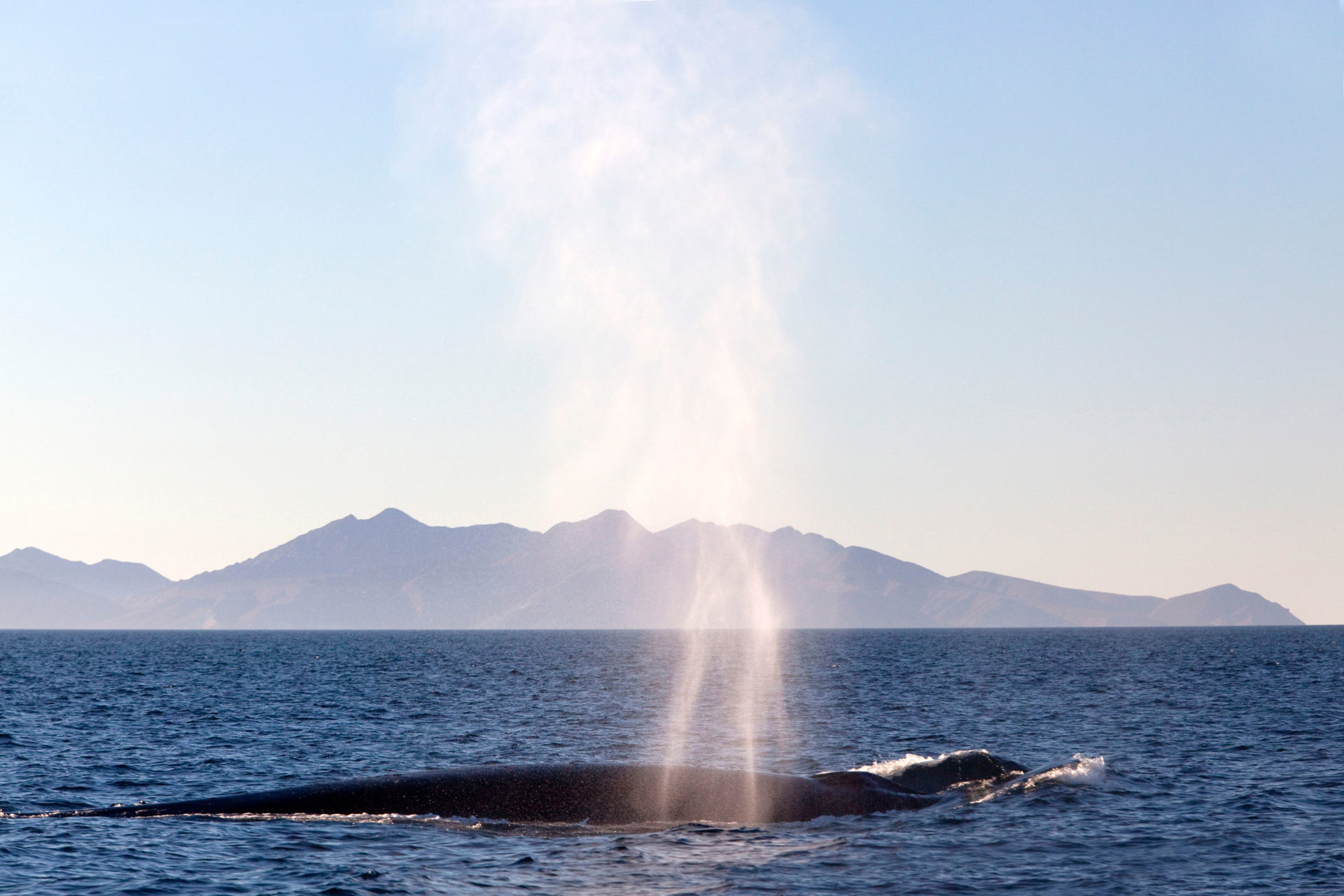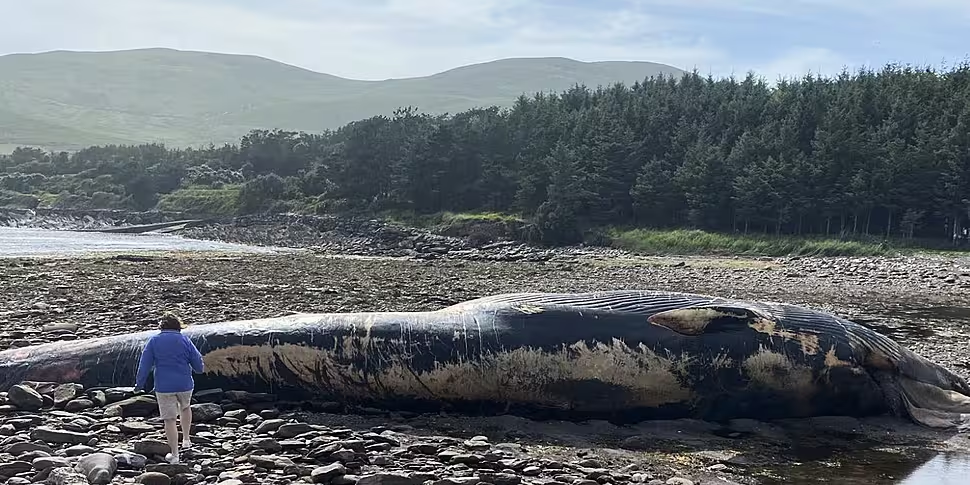There is “no good option” for disposing of the fin whale carcass that has washed up on a beach in Kerry.
The fin whale is the second largest animal on planet earth and the species is found in oceans all over the world.
Speaking to Moncrieff, Irish Whale and Dolphin Group sightings officer Pádraig Whooley said it was “unclear” how the animal had passed away - but it most likely died well before it was washed ashore.
“It’s probably of adult age given its length - it’s about sixty two feet long - and it’s been dead a while,” he said.
“So, it’s got all the hallmarks of an animal that’s died at sea and would have washed ashore after a couple of weeks.”
Eat it?
For centuries, whale meat was a staple of people’s diets across the world - people even fed whale to their pets and used the animal's bubbler to heat their homes.
With the global population of whales in rapid decline, the International Whaling Commission called for a moratorium on commercial whaling in 1982.
 Commercial whaling in Iceland.
Commercial whaling in Iceland.Nowadays, only Norway, Japan and Iceland allow the practice - but not so long ago people in Ireland would have been relaxed about eating a whale for dinner.
“If this had happened at any stage in the last 200 years, it could quite easily have been cut up and eaten by local communities - certainly, in bygone centuries,” Mr Whooley said.
“That’s not going to happen in this day and age - we like our food processed way too much nowadays.”
Leave it be?
Alternatively, the carcass could simply be left to decay on the beach - but Mr Whooley said it would be smelt “from miles away”.
“It would be a massive boon to local ecology,” he said.
“Everything would feed on it, it would just create an enormous smorgasbord for a whole raft of biodiversity - but it would also leave a pretty nasty smell.
“I know down there in South Kerry, you’ve got a lot of beautiful beaches and a lot of holidaymakers and holiday homes.
“I imagine the phones in Kerry County Council would be ringing off the wall with people complaining about the smell.”
 A fin whale (Balaenoptera physalus) comes to the surface for air in Kino Bay, Mexico.
A fin whale (Balaenoptera physalus) comes to the surface for air in Kino Bay, Mexico.Burial?
The only remaining option is to call in engineers and dispose of it like you would the body of any other large animal.
“You’re then left with option three which is really one which is down to the engineers and Kerry County Council,” he said.
“It’s either the option of burying it, which sounds pretty easy but for an animal that’s bigger than several bull African elephants is not as easy as it may sound.
“The other option is to break the carcass up into manageable bite size chunks and then remove it.”
Mr Whooley said there is “no clear good option” and “all of them make for a difficult day at the office”.
You can listen back here:
Picture by: Twitter via John O'Halloran @johbees









